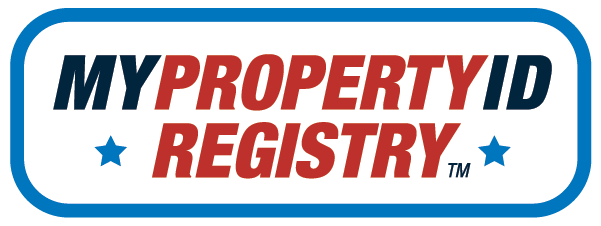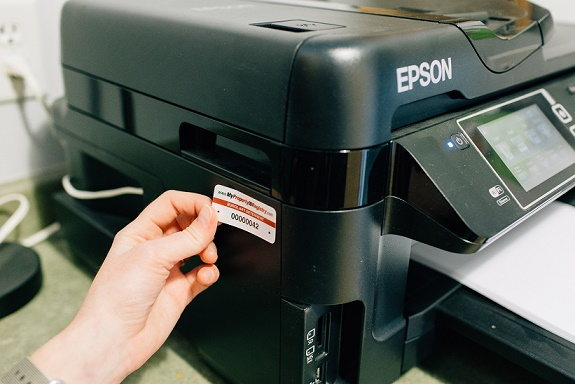The suitability of the universal identifier —
In the asset management trade, the universal identifier is a system by which most people will immediately get a hint as to who is the rightful owner of a piece of property. In our case, it’s easy enough for someone to see our website on the tag and investigate further. Around the globe, every large business, government and university marks all of their property and lists the makes, models and serial numbers in a database. Turn the monitor around at a college computer lab or at your local public library. You’ll see an ID tag with the institutions name and an inventory number. Like with a car, everything is tagged and titled and linked to the underlying serial number.
Linking the universal identifier to law enforcement agencies
Large institutions apply ID tags and register serial numbers as a burglary deterrent and for inventory management. Most law abiding citizens might not fully grasp the underlying power of registering serial numbers, but with a stolen item’s serial number attached to a police report, global law enforcement agencies, such as the FBI and Interpol, are able to see patterns and trends and solve crimes by using databases like those at the National Crime Information Center (NCIC).
The universal identifier as a burglary deterrent
Have you ever noticed how large corporations never seem to have their computers stolen? It’s because criminal gangs know that the items will be very difficult to resell. That’s because legitimate re-sellers are required to check the NCIC to see if property is stolen. If a criminal attempts to sell something, the police will be called. The police also monitor websites like Craigslist and Facebook Marketplace. If they see an item listed that might be marked in some way, a detective will investigate and execute an arrest.
Bad idea to use Social Security numbers as a universal identifier
In 1963, with the advent of the consumer etching tool, law enforcement agencies urged citizens to write serial numbers down, post warning signs, and mark their property with an ID tag anyone would recognize. One of the earliest universal identifiers was your Social Security number. We now know that’s a terrible idea. The next suggestion was to use your two-letter state abbreviation and the randomized numbers on your driver’s license. In today’s world, that’s just too risky to spread around.
Developing a secure universal identifier for the general public
With the advent of the internet and other technologies, we have been able to develop a system just like global corporations have, but miniaturized for the general public. Individuals, homeowners and small businesses now become their own miniaturized asset managers. The numbers embedded in the ID tags that arrive in the mail are tied to your account the instant you place your order, and are stored on our database in your privacy-protected area. Once the tags arrive, it takes less than a half hour with the 10-tag kit to mark your items, register the make, model and serial numbers on the database and post warning signs.



